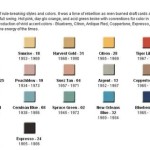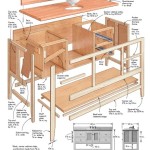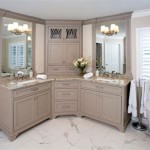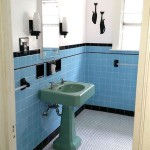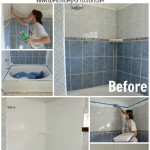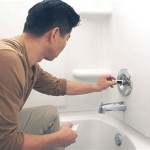How to Remove a Bathroom Mirror Without Clips: A Comprehensive Guide
Removing a bathroom mirror that is not secured with visible clips can seem like a daunting task. These mirrors are typically affixed to the wall using a strong adhesive, making their removal a delicate process that requires patience and the right tools. Understanding the techniques involved is crucial to prevent damage to the mirror, the wall, and, most importantly, personal injury. This article provides a detailed guide on how to safely and effectively remove a bathroom mirror without clips.
Preparing for the Removal Process
Before initiating the removal procedure, proper preparation is paramount. This involves gathering the necessary tools and taking precautions to protect the surrounding area. Neglecting these preliminary steps can lead to complications and potential hazards during the mirror removal.
The following tools are recommended:
*Safety Glasses:
Protect eyes from debris and potential glass shards. *Gloves:
Provide a better grip and protect hands from sharp edges. *Putty Knife or Scraper:
Used to gently separate the mirror from the wall. Opt for a plastic putty knife to minimize the risk of scratching the mirror's surface. *Hammer (Optional):
May be needed to tap the putty knife deeper behind the mirror, but use with extreme caution. *Painter's Tape:
Protects the wall around the mirror from scratches and paint chipping. *Wire Saw or Piano Wire:
A thin, strong wire can be used to cut through the adhesive behind the mirror. *Heat Gun or Hair Dryer:
Warming the adhesive can soften it and make it easier to separate the mirror from the wall. *Level:
Ensures the mirror is reinstalled straight, if applicable. *Measuring Tape:
For reinstallation purposes. *Drop Cloth or Old Sheet:
Protects the floor from falling debris and glass. *Cardboard or Protective Sheeting:
Provides a safe place to set the removed mirror. *Solvent (Mineral Spirits or Adhesive Remover):
For cleaning residual adhesive from the wall. *Clean Rags:
For applying the solvent and wiping down surfaces.Once the tools are assembled, prepare the bathroom environment. Cover the floor with a drop cloth or old sheet to protect it from falling debris. Apply painter's tape around the perimeter of the mirror to safeguard the wall from scratches and paint chipping during the removal process. Clear any obstacles from the area surrounding the mirror to provide ample workspace. Ensure adequate ventilation in the bathroom, especially when using solvents for cleaning.
The Removal Techniques
Several techniques can be employed to remove a mirror without clips. The selection of a specific method depends on the size and weight of the mirror, the type of adhesive used, and the individual's comfort level with the tools involved. Each technique should be approached with caution and patience to minimize the risk of damage.
One common technique involves using a putty knife and gentle prying. Begin by inserting the putty knife between the mirror and the wall at one of the corners. Gently tap the back of the putty knife with a hammer, if needed, to ease it further behind the mirror. Avoid applying excessive force, as this could crack the mirror or damage the wall. Work slowly and methodically around the perimeter of the mirror, gradually separating it from the wall. If the mirror is large, consider having a helper support it as it comes loose, preventing it from falling and shattering.
Another effective method utilizes a wire saw or piano wire. This technique is particularly useful for mirrors that are heavily adhered to the wall. Carefully slide the wire behind the mirror, starting at one of the corners. Use a sawing motion to cut through the adhesive, working your way around the entire perimeter. This method requires patience and a steady hand to avoid damaging the mirror or the wall. As with the putty knife method, support the mirror as it becomes detached.
Heat can also be used to soften the adhesive. Apply heat to the edges of the mirror using a heat gun or hair dryer, moving it continuously to avoid overheating any one area. The heat will soften the adhesive, making it easier to separate the mirror from the wall using a putty knife or wire saw. Be careful not to overheat the mirror, as this could cause it to crack.
Regardless of the method chosen, it is crucial to exercise patience and avoid using excessive force. Rushing the process can result in damage to the mirror, the wall, or personal injury. Work slowly and methodically, taking breaks as needed.
Addressing Residual Adhesive and Wall Repair
Once the mirror has been successfully removed, the next step involves addressing any residual adhesive remaining on the wall. This adhesive can be unsightly and may interfere with future painting or wall repairs. Proper removal of the adhesive is essential for a clean and professional finish.
The most common method for removing residual adhesive is to use a solvent such as mineral spirits or a dedicated adhesive remover. Apply the solvent to a clean rag and gently rub the adhesive, allowing the solvent to soften it. Continue rubbing until the adhesive is completely removed. Be sure to follow the manufacturer's instructions for the solvent and to wear appropriate protective gear, such as gloves and eye protection.
After removing the adhesive, the wall may require some repair. Depending on the extent of the damage, this may involve patching holes, filling gouges, or sanding rough spots. Use a spackle or patching compound to fill any imperfections, following the manufacturer's instructions. Allow the compound to dry completely, and then sand it smooth with fine-grit sandpaper. Once the wall is smooth, it can be primed and painted to match the surrounding area.
In some cases, the mirror removal may have damaged the drywall. If the drywall is significantly damaged, it may need to be replaced. This involves cutting out the damaged section of drywall and replacing it with a new piece. The new drywall should be taped and mudded to blend it seamlessly with the surrounding wall.
Properly addressing residual adhesive and wall repair is essential for a professional and aesthetically pleasing result. Taking the time to perform these steps carefully will ensure that the wall is ready for painting or future renovations.
Following these steps ensures a safer and more effective mirror removal process, minimizing potential damage and injury. Prioritize safety and patience throughout each stage.

How To Remove A Bathroom Mirror Lowe S

How To Remove A Frameless Mirror Like Nervous Grandma

Removing A Bathroom Mirror Mounting Clips Or Brackets

How To Safely And Easily Remove A Large Bathroom Builder Mirror From The Wall Site Title

How To Safely And Easily Remove A Large Bathroom Builder Mirror From The Wall Site Title

How To Remove A Bathroom Mirror Lowe S

How To Safely And Easily Remove A Large Bathroom Builder Mirror From The Wall Site Title

Taking Down A Bathroom Mirror

How To Install A Mirror Without Frame Merrypad

How To Safely And Easily Remove A Large Bathroom Builder Mirror From The Wall Site Title
